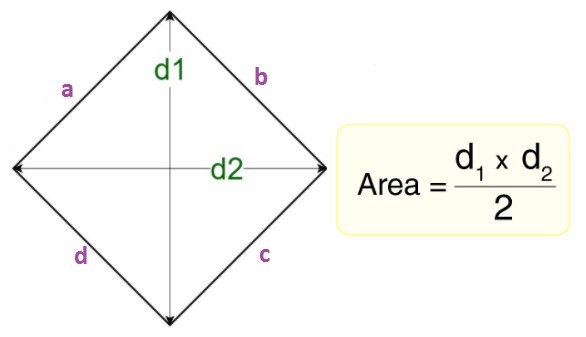Calculating the area of a rhombus involves understanding its unique characteristics. A rhombus is a four-sided polygon with all sides equal in length, and opposite angles equal in measure. To find the area of a rhombus, we can use the formula A = (diagonal₁ * diagonal₂) / 2, where "diagonal₁" and "diagonal₂" are the lengths of any two diagonals that intersect at a 90-degree angle inside the rhombus. This formula reflects the fact that the area of a rhombus is half the product of these diagonals, similar to how a rectangle's area is the product of its length and width. In summary, to calculate the area of a rhombus, multiply the lengths of any two perpendicular diagonals, then divide by 2, unveiling the space enclosed within this four-sided jewel of geometry.

